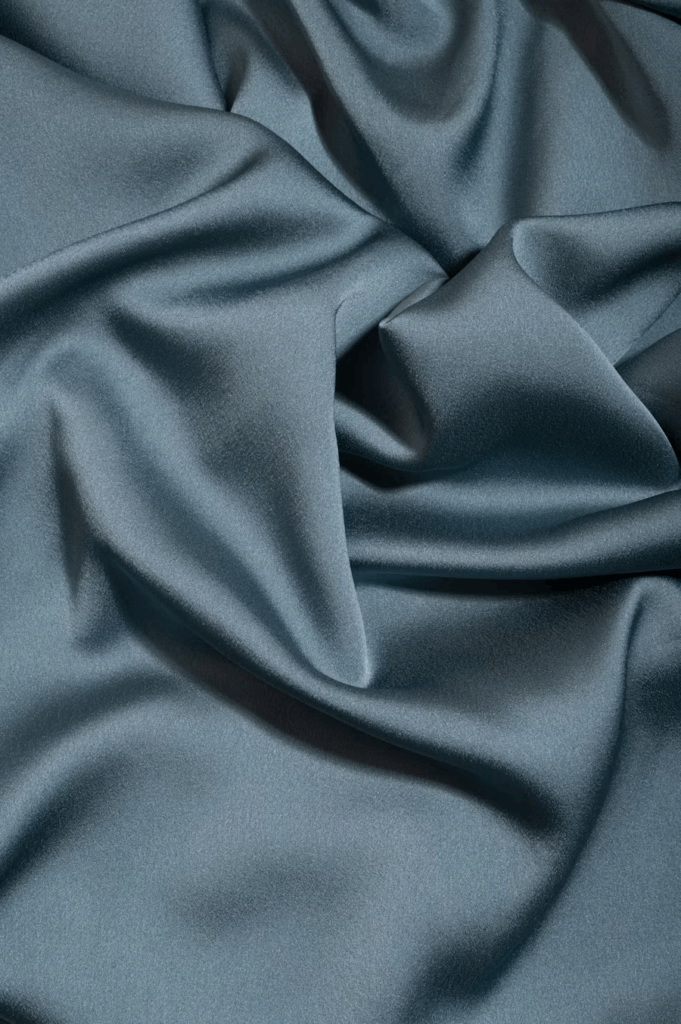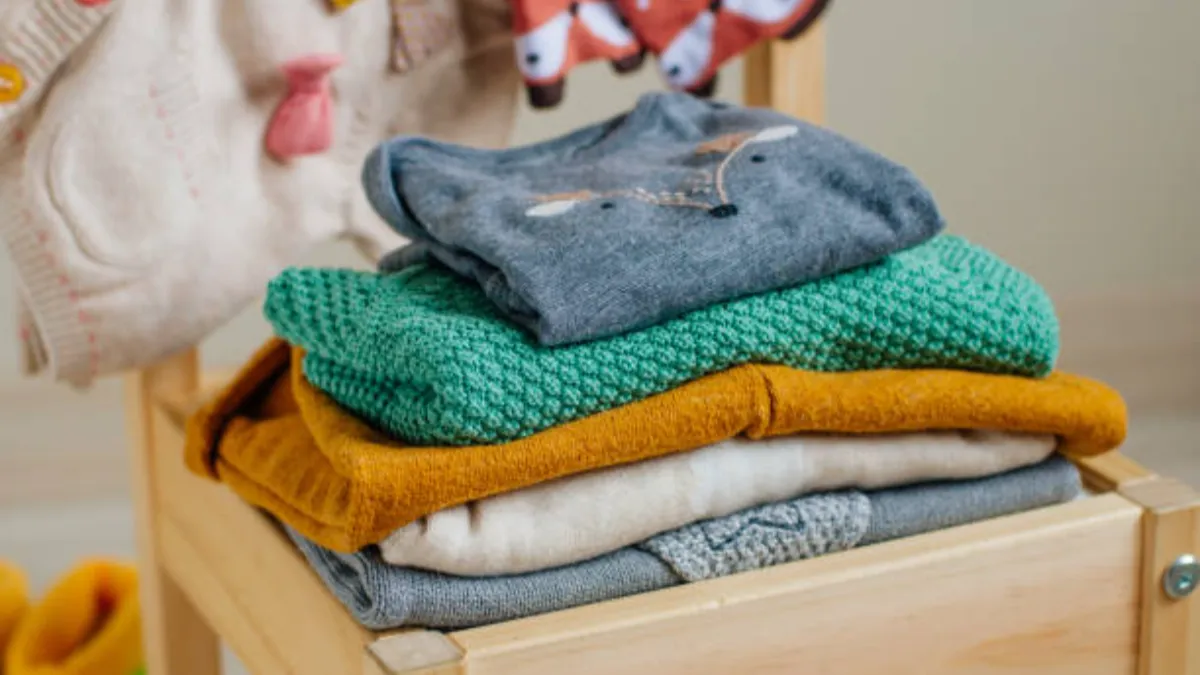When you touch a piece of clothing, the very first thing you notice is its fabric. Is it smooth? Stretchy? Warm? Light? Behind every piece of fashion is a world of fibers, weaves, finishes, and patterns that determine not just how clothing looks—but how it fits, feels, and performs.
In this guide, we’ll walk you through a detailed materials for clothes list, break down the different types of textiles—natural, synthetic, and everything in between—and show you how they’re used in real-world fashion. We’ll also help you understand texture, weave techniques, and even the types of fabric patterns you’re likely to see in clothing. Let’s dive into the fibers that make fashion work.
Natural Fabrics: Breathable, Biodegradable & Versatile

Natural fabrics come from plant or animal sources. They’re typically breathable, skin-friendly, and widely used in both casual and luxury garments.
Cotton: Everyday Essential
- Comfortable and soft: Cotton’s natural softness makes it ideal for everyday wear like t-shirts, jeans, and undergarments.
- Highly breathable: Allows air circulation, making it ideal for summer apparel.
- Takes dye well: Excellent for printing and producing vibrant types of fabric patterns.
- Easy to maintain: Machine-washable and widely used in mass production.
- Common in: T-shirts, bedsheets, kidswear, and denim.
Linen: Lightweight & Breezy
- Plant-based fiber from flax: Known for its crisp texture and breathability.
- Wicks moisture well: Keeps the body cool, ideal for hot climates.
- Eco-friendly: Linen is biodegradable and requires fewer pesticides during cultivation.
- Wrinkles easily: Gives it a relaxed, natural charm.
- Popular in: Summer dresses, shirts, resort wear, and table linens.
Wool: Nature’s Insulator
- Excellent thermal regulation: Keeps you warm in cold and cool in heat.
- Moisture-wicking: Wool can absorb sweat while keeping you dry.
- Variety of types: Includes merino, cashmere, alpaca, and mohair, each with unique textures.
- Naturally odor-resistant: Great for layering pieces and outdoor gear.
- Used in: Sweaters, coats, formal suits, scarves.
Silk: Luxurious & Elegant
- Soft and smooth texture: Feels light on the skin and drapes beautifully.
- Natural sheen: Gives garments a rich, high-end appearance.
- Thermoregulating: Keeps you cool in summer and warm in winter.
- Delicate to care for: Often requires dry cleaning.
- Perfect for: Lingerie, evening gowns, scarves, bridal wear.
Synthetic Fabrics: Strong, Stretchy & Easy to Maintain

Synthetic fabrics are made from petrochemicals, offering flexibility, strength, and durability. They are often used in activewear and fast fashion.
Polyester: Durable and Versatile
- Highly wrinkle-resistant: Retains shape and resists shrinking.
- Quick-drying: Common in travel and workout clothes.
- Blends well: Often mixed with cotton or rayon to balance comfort and durability.
- Affordable and colorfast: Retains dyes well, excellent for prints.
- Used in: Sportswear, outerwear, linings, fast fashion basics.
Nylon: Strong & Lightweight
- Very durable: Resistant to wear, ideal for items like tights or backpacks.
- Flexible and stretchable: Makes it a favorite in activewear and lingerie.
- Low water absorbency: Dries quickly, used in swimwear and rain gear.
- Shiny finish: Smooth texture, can mimic silk in some weaves.
- Used for: Leggings, activewear, windbreakers, hosiery.
Acrylic: Wool Alternative
- Soft and warm: Mimics wool but lighter and machine-washable.
- Resistant to moths: Unlike natural wool, it doesn’t attract insects.
- Color retention: Excellent for bright colors and vibrant designs.
- Often used in: Sweaters, blankets, hats, scarves.
Spandex (Lycra): Stretch Specialist
- Extreme elasticity: Can stretch 5–8x its size.
- Blended into other fabrics: Often combined with cotton or nylon to add flexibility.
- Shape retention: Keeps garments fitting well over time.
- Common in: Leggings, sports bras, dancewear, shapewear.
Semi-Synthetic Fabrics: Softness Meets Sustainability
Semi-synthetics are derived from natural sources (like wood pulp) and processed chemically. They provide a balance between feel, performance, and eco-friendliness.
Rayon: Soft and Versatile
- Smooth and breathable: Feels like cotton or silk, drapes well.
- Absorbs moisture: Great for warm-weather garments.
- Delicate structure: Can shrink or wrinkle easily.
- Used in: Dresses, blouses, linings, sleepwear.
Viscose: Glossy and Comfortable
- Derived from cellulose: Very soft and suitable for delicate garments.
- Affordable alternative to silk: Similar look and feel.
- Absorbs dye well: Rich in color, great for printed patterns.
- Common in: Women’s tops, skirts, luxury loungewear.
Modal: Smooth and Durable
- Upgraded rayon: More durable and shrink-resistant.
- Eco-friendly source: From beech tree pulp.
- Moisture-wicking: Keeps wearers dry and comfortable.
- Often used in: Undergarments, loungewear, eco-friendly brands.
Lyocell (Tencel): High-End Eco Fabric
- Biodegradable and sustainable: Made using closed-loop water systems.
- Silky and breathable: Good for sensitive skin.
- Wrinkle-resistant: Easier to maintain than rayon.
- Used in: Casual shirts, dresses, activewear.
Specialty & Blended Fabrics: Function Meets Fashion
Blended or specialty fabrics enhance performance, reduce cost, or create unique textures.
Blends (e.g., poly-cotton, cotton-spandex)
- Balanced performance: Combines breathability with strength.
- Easy-care: Wrinkle-resistant, washable.
- Improved durability: Reduces wear and tear in mass production.
- Popular with: Women’s wear manufacturers seeking versatility.
Fleece: One of the Top Types of Fuzzy Fabric
- Soft and warm: Brushed finish creates plush texture.
- Lightweight insulation: Great for layering in winterwear.
- Water-resistant: Some versions are treated for moisture protection.
- Found in: Jackets, hoodies, baby wear, blankets.
Denim: Rugged and Timeless
- Durable twill weave: Heavy-duty cotton fabric.
- Versatile use: From jeans to jackets.
- Distressed finishes: Popular in casual fashion.
- Can be blended: Added stretch using spandex.
Jersey Knit: Everyday Comfort
- Stretchy and soft: Ideal for comfort-focused apparel.
- Can be natural or synthetic: Cotton jersey or viscose jersey.
- Used in: T-shirts, dresses, babywear, athleisure.
How Fabric Properties Influence Design
Understanding the characteristics of each fabric is key in choosing the right material for functionality and fashion.
Breathability
- Cotton, linen, and modal offer excellent airflow.
- Essential in summer wear and active garments.
Stretch and Fit
- Spandex or blended knits offer flexibility.
- Needed in body-hugging clothes and sportswear.
Durability
- Polyester, nylon, and denim handle wear well.
- Best for outerwear, uniforms, and workwear.
Texture and Appearance
- Fleece and velvet are cozy, types of fuzzy fabric.
- Satin, silk, and viscose create elegant, smooth finishes.
Printability
- Cotton and viscose absorb dyes beautifully.
- Great for patterned designs or types of fabric patterns.
자주 묻는 질문
How can different fabrics be used?
Different fabrics are suited to different applications. Cotton is perfect for casual wear, while polyester is great for sportswear. Wool is excellent for winter garments, and silk works well for evening wear. Top manufacturers often choose fabrics based on breathability, weight, texture, and durability.
What are the 8 kinds of manufacturing fabric techniques?
The main textile manufacturing techniques include:
- Weaving
- 편물
- Non-woven bonding
- Felting
- Laminating
- Braiding
- Crocheting
- 자수
Each method produces different structures and textures for specific uses.
How do I identify what fabric I have?
- Burn test: Different fabrics burn differently.
- Texture and feel: Silk is smooth; wool is coarse.
- Stretch test: Knit fabrics stretch more than woven ones.
- Weave pattern: Twill, plain, or satin weave can offer clues.
What is the most used fabric in clothes?
Cotton is the most widely used due to its comfort, versatility, and affordability. Polyester comes in second, especially in activewear and fast fashion.
결론
From the cozy comfort of cotton to the sleek shine of silk, fabrics play a central role in the fashion world. Understanding different textile types, blends, and properties not only improves your shopping decisions but also empowers fashion brands and women’s wear manufacturers to create better products.
Whether you’re sourcing materials, starting your own label, or just want to upgrade your wardrobe knowledge, this guide offers the insight you need. Now that you’ve explored the complete materials for clothes list, learned about types of fabric patterns, and dived into the world of fuzzy and blended fabrics, you’re well-equipped to make smarter choices in style and production.




